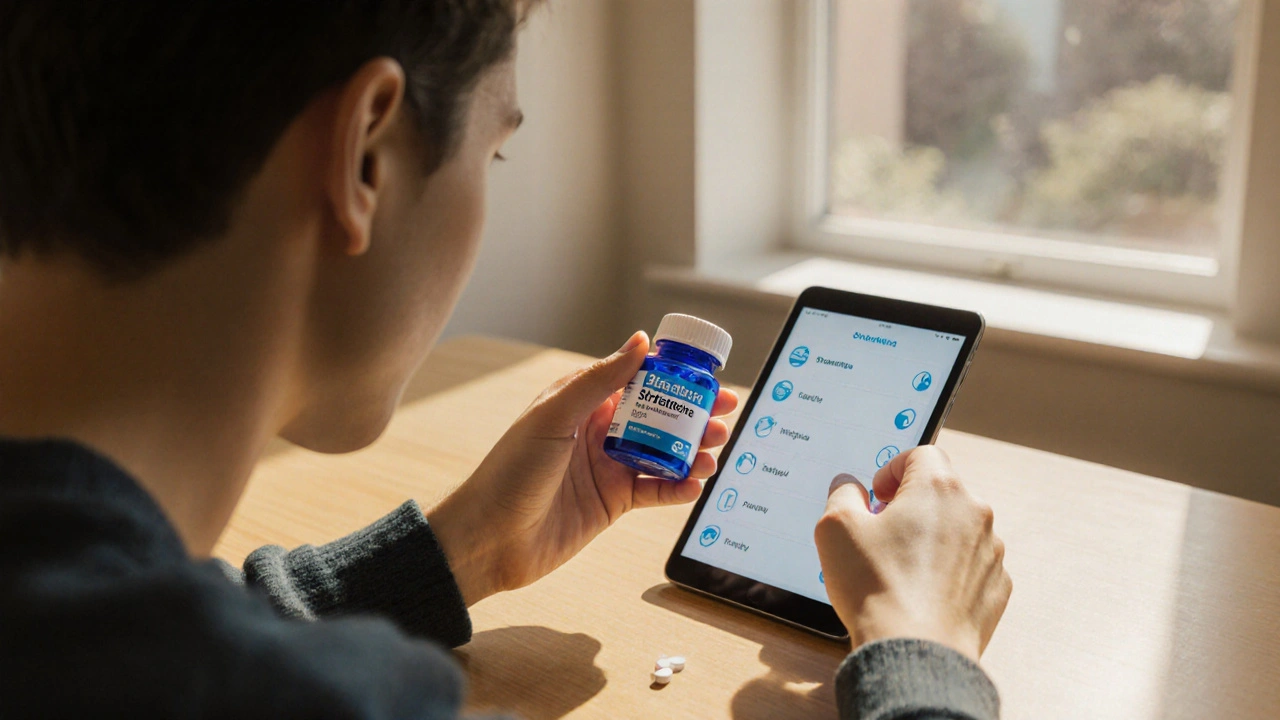Compare Strattera (atomoxetine) with top ADHD drug alternatives, covering efficacy, side effects, costs, and best‑fit scenarios for informed treatment choices.
When talking about Strattera, the brand name for the prescription drug atomoxetine, approved for attention‑deficit/hyperactivity disorder (ADHD). Also known as atomoxetine, it offers a non‑stimulant option for people who need long‑lasting symptom control without the typical jitter of stimulant meds.
ADHD, formally defined as Attention‑Deficit/Hyperactivity Disorder, a neurodevelopmental condition marked by inattention, hyperactivity, and impulsivity, often leads patients to consider both stimulant and non‑stimulant therapies. Atomoxetine, the active ingredient in Strattera, works by selectively inhibiting the reuptake of norepinephrine, which helps improve focus and reduce impulsivity. Because it’s not a controlled substance, it sidesteps many of the abuse concerns tied to traditional stimulants like methylphenidate. This makes Strattera a solid choice for adults, adolescents, or anyone with a history of substance misuse.
The medication requires a prescription, and the typical starting dose is 40 mg once daily, gradually titrated up to 80 mg based on response and tolerance. Dosage adjustments are common; doctors often monitor blood pressure and heart rate because atomoxetine can raise both. Side‑effects range from mild (dry mouth, insomnia, decreased appetite) to more serious (liver enzyme changes, mood swings). If you notice sudden mood changes or suicidal thoughts, contact a healthcare professional immediately.
Strattera’s onset is slower than that of stimulants. While stimulants may show effects within minutes, atomoxetine generally takes 2–4 weeks to reach full therapeutic levels. This delayed action makes it essential to set realistic expectations early on and maintain consistent daily dosing. Patients who stick with the prescribed regimen often report stable symptom control that lasts throughout the day without the crash that follows many stimulant doses.
Interactions matter, too. Because atomoxetine is metabolized by the liver enzyme CYP2D6, drugs that inhibit or induce this enzyme (like fluoxetine or quinidine) can alter Strattera’s effectiveness. A thorough medication review with your doctor helps avoid unexpected side‑effects. Likewise, alcohol can increase sedation, so it’s best to limit intake while on the drug.
When comparing Strattera to stimulant options, several factors stand out. Stimulants usually provide quicker relief and may be more effective for severe hyperactivity, but they also carry higher cardiovascular risks and potential for dependence. Strattera offers a steadier pharmacologic profile, making it preferable for patients with heart issues or those who prefer a once‑daily pill over multiple doses. Cost can vary; while some insurance plans cover generic atomoxetine, others may require higher copays.
Beyond symptom control, many users find that Strattera improves overall quality of life. Better focus can translate to improved academic performance, workplace productivity, and personal relationships. Some studies even suggest that consistent atomoxetine use may positively influence executive function development in adolescents, although more research is needed.
Special populations deserve attention. For children under six, Strattera is not FDA‑approved, so pediatric use requires careful risk‑benefit analysis. In pregnant or breastfeeding women, the safety profile remains unclear, so doctors weigh alternatives. Elderly patients may experience heightened sensitivity to blood pressure changes, warranting lower starting doses.
Monitoring is a cornerstone of safe StratterA therapy. Regular check‑ins every 4–6 weeks during the titration phase help assess efficacy and side‑effects. Blood tests may be ordered to track liver function, especially in the first few months. Tracking tools like symptom diaries or rating scales can provide objective data for clinicians to fine‑tune treatment.
In practice, many patients combine Strattera with behavioral therapy, dietary adjustments, and structured routines. While the medication addresses neurochemical imbalances, lifestyle changes reinforce the gains made in focus and impulse control. Techniques such as breaking tasks into smaller steps, using timers, and creating organized workspaces complement the drug’s effects.
Ultimately, Strattera represents a viable, non‑stimulant path for ADHD management. It bridges the gap for those who need consistent symptom relief without the ups and downs of stimulant drugs. The upcoming posts dive deeper into dosage strategies, real‑world experiences, side‑effect management, and how Strattera stacks up against other ADHD treatments. Explore the collection below to find detailed guides, patient stories, and expert advice tailored to help you make informed decisions about your ADHD journey.

Compare Strattera (atomoxetine) with top ADHD drug alternatives, covering efficacy, side effects, costs, and best‑fit scenarios for informed treatment choices.